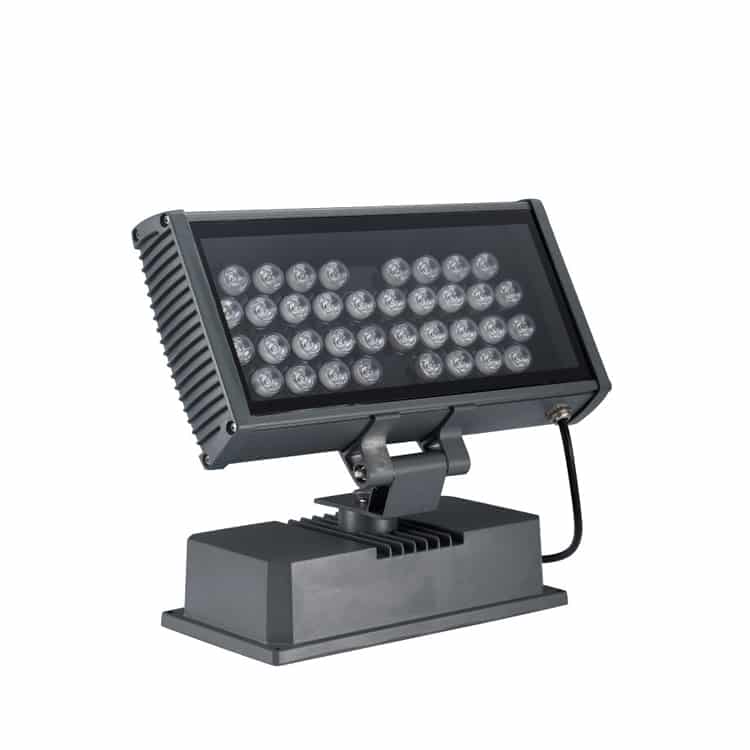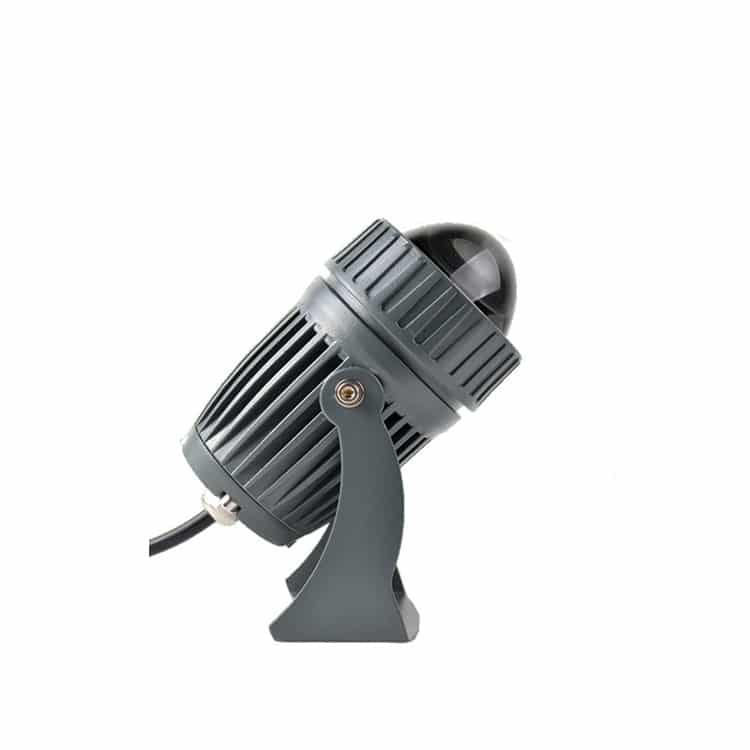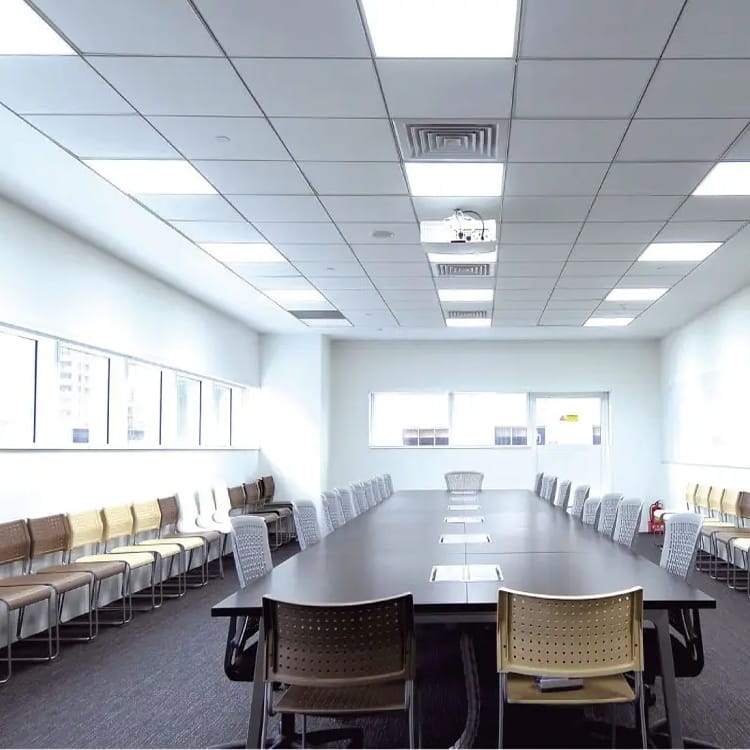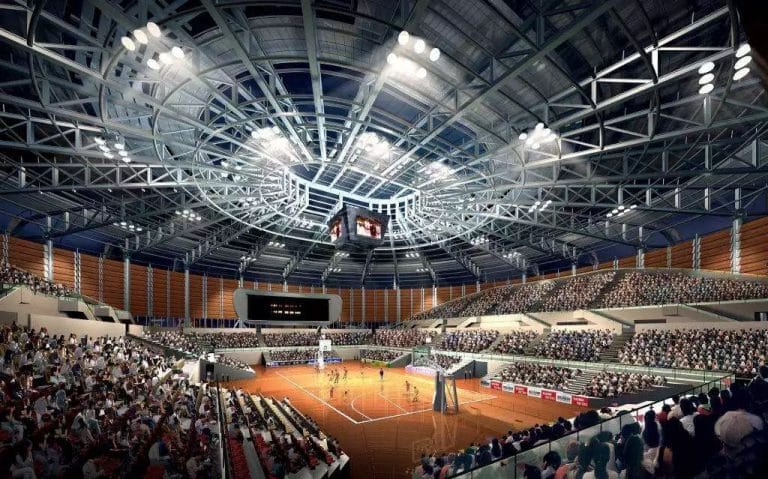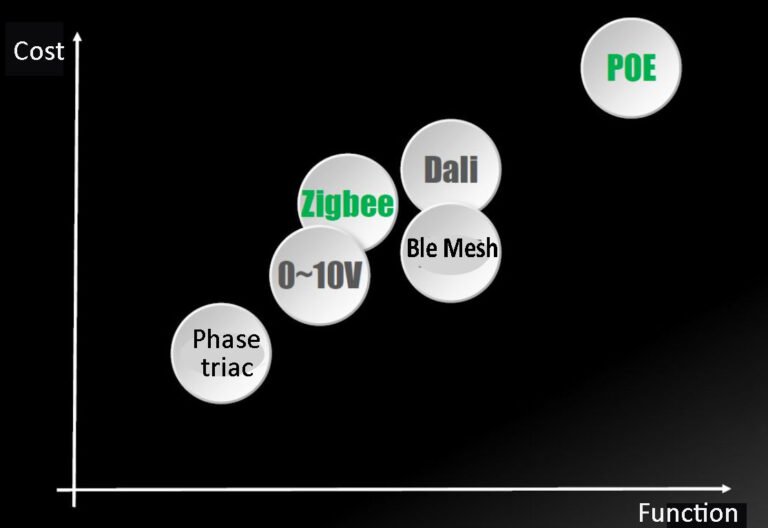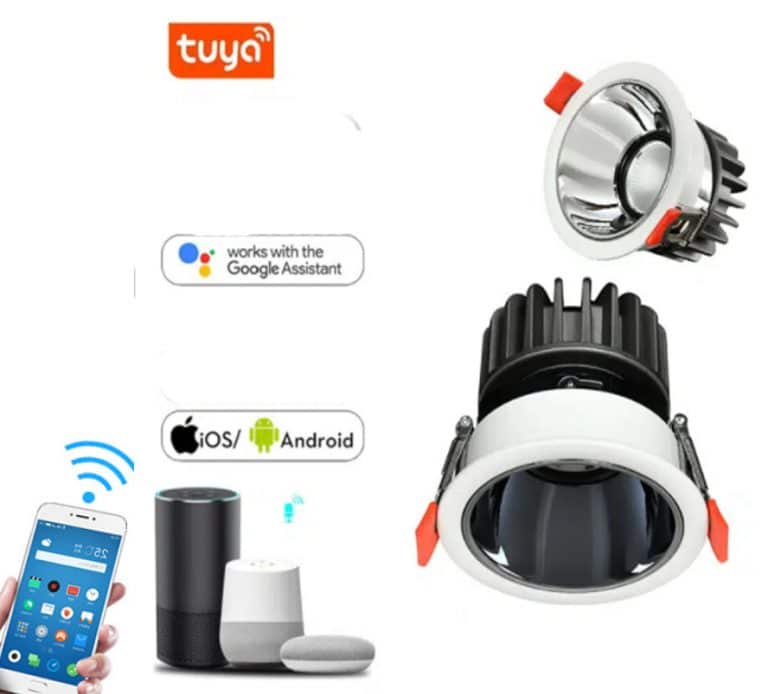Tree lighting is an important part of garden landscape lighting. Trees come in various species and exhibit diverse forms of expression. Therefore, tree lighting design should consider the height, shape characteristics, and color of the trees when selecting and controlling the placement of lights, light sources, and beam angles. By using modern lighting technology and the art of lighting, we can create the desired visual effects and fulfill basic lighting needs.
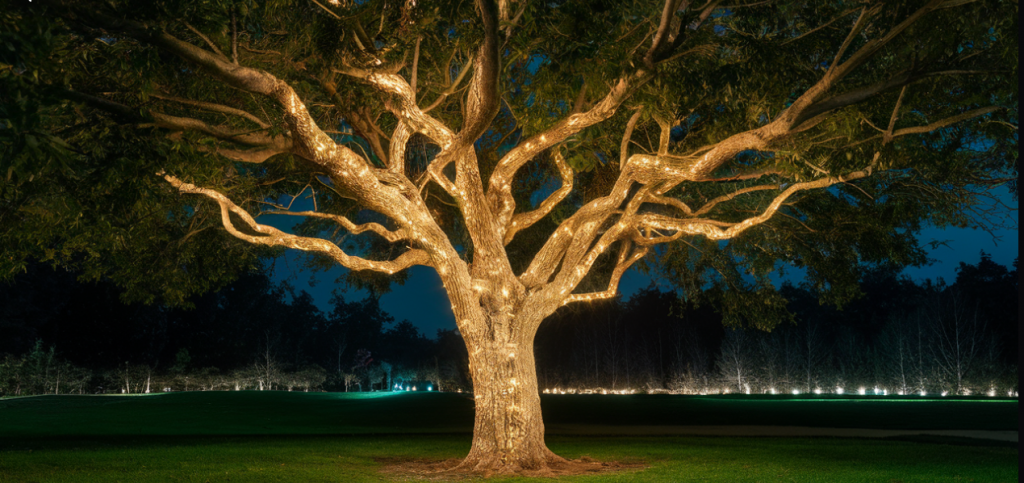
Three Types of Trees and Recommended Lights
Low Shrubs and Ground Cover
Lighting for low shrubs and ground cover plants is not suitable for close-range spotlights as it can easily disrupt the integrity of the shrub’s shape. It is recommended to use distant projection or uplighting with 10W-30W Tree floodlights. Recommended voltage: DC 12V/24V. Light color: green, yellow, or white, depending on the actual scene effect.
Medium to Tall Trees
For 3-5 meters trees with relatively full shapes, the appropriate lighting method should be chosen based on their role in the landscape. These trees can have lights installed directly below them, about 3 meters away, or mounted on poles about 3 meters away to shine down on the trees. 50W-100W LED floodlights are suitable. Light color: green, yellow, or white, depending on the actual scene effect.
Tall Trees
Over 5 meters trees often serve as backgrounds in gardens. The lighting method should be chosen based on their distance and relationship with people. Dense forests in the distance should be subtly illuminated, while near broadleaf trees with spreading trunks and canopies can be highlighted with wide-beam uplights under the canopy’s shadow to emphasize the tree’s structure and strength. Alternatively, the spreading branches can be projected onto the ground. Tall trees are typically with lights installed on the branches, below the tree, or about 3 meters away. LED spotlights or 100W-200W LED floodlights are recommended. Light color: green, yellow, or white, depending on the actual scene effect.
Outdoor Tree Lighting Ideas
- Projection Lighting: This involves positioning lights to shine vertically on plants from a distance, providing even illumination across the plant’s surface. This method can create bright or soft lighting and aims to achieve an overall composition.
- Internal Lighting: For plants with many gaps between branches and transparent leaves, lights can be placed near or on the ground beneath the branches. This creates an effect where the branches and leaves appear to glow.
- Grazing Lighting: This technique places lights closer to the plants than surface lighting, shining “tangentially” to emphasize texture. Depending on the size and height of the plant, narrow beam angle lights are chosen. Sometimes, optical prism glass and other accessories are added to the lights to create a “fan-shaped” beam, maximizing light utilization.
- Silhouette Lighting: This involves placing lights behind the plant to illuminate the wall behind it. The lighting highlights only the plant’s shape, without texture, color, or detail. This method is suitable for plants with a distinct shape that serves as the prominent visual focal point in the composition.
- Shadow Lighting: This technique involves illuminating the tree from a high side position, casting shadows on nearby vertical surfaces. It adds interest to walls by creating shadow patterns.
- Light Decorations: This method involves decorating trees with light strings, light strips, and hanging light ornaments to highlight the tree’s outline.

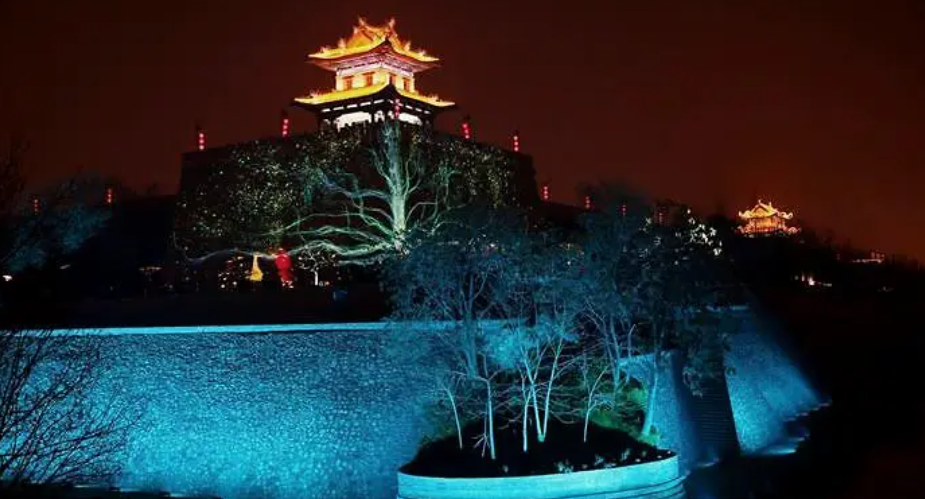

Types of Lights Used for Outdoor Tree Lighting
LED Tree Lights:
LED tree lights are a reliable, energy-efficient, and environmentally friendly solution for tree illumination. LED tree lights (tree spotlights, tree floodlights, tree uplights) can be adjusted for color and brightness as needed, with the option for either single-color or multicolor effects. Additionally, LED tree lights have a long lifespan and low maintenance costs, making them suitable for long-term use.
Fiber Optic Tree Lights:
Fiber optic tree lights connect a light source to fiber optics to transmit light to the tree, creating an illumination effect. Fiber optic tree lights can produce soft lighting, and their color can be adjusted as needed. One advantage is that the light source can be centralized, reducing disturbance to the tree.
Solar Tree Lights:
Solar tree lights collect solar energy through solar panels and convert it into electricity to power the tree lights. They are green, environmentally friendly, and emission-free, making them suitable for outdoor environments. Solar tree lights usually have light sensors that can automatically adjust brightness and operating time based on ambient light levels.
Laser Tree Lights:
Laser tree lights use laser technology to generate beams of light. By controlling and adjusting these beams, the illumination effect on the trees is achieved. Laser tree lights can produce very bright light with high visual impact, making them suitable for special occasions requiring tree illumination.
Neon Lights:
Neon lights are a traditional method for tree illumination, widely used on city streets, squares, and other public spaces. Neon lights can produce a variety of colors, creating bright and dazzling effects that add a festive atmosphere to the trees.
Design Principles for Outdoor Tree Lighting
- Seasonal Adaptation: Garden lighting should adapt to seasonal changes. Highlight canopies and leaves in spring, summer, and autumn; focus on branches and trunks in winter.
- People-Centric Design: Choose appropriate light sources and colors to meet people’s needs. Ensure proper light levels, prevent glare, and avoid light pollution.
- Tree-Specific Lighting: Match lighting to tree type. Use uplights for trees with open canopies like camphor and magnolia. For dense conifers like cedars, use point lights around the canopy.
- Ecological Protection: Consider ecological impact. Avoid strong lights that disrupt plant and animal rhythms and can cause ecological imbalance.
- Safety: Ensure all lighting solutions meet safety standards and regulations for safe installation and use.
LED Tree Lighting Construction Plan
Pre-Construction Preparations
- Materials Preparation: Determine the required materials, such as LED lights, cables, and controllers, based on the actual situation, and calculate the necessary quantities.
- Design Plan Confirmation: Determine the installation positions, quantities, brightness, and other parameters of the LED tree lights according to the landscape design requirements.
- Pre-confirm the power supply situation: Ensure that the construction area has a stable power supply that can meet the power requirements of the LED tree lights
Construction steps
- Tree Preparation: Select suitable trees for lighting decoration. First, check the health of the trees and remove any debris from the surface to ensure the LED lights have a good display effect.
- Bracket Installation: Fix the brackets to the trees. The brackets should be sturdy and reliable without harming the growth of the trees. The number and height of the brackets are determined based on the design plan.
- LED Light Installation: Install the LED lights on the brackets and arrange them according to the design plan. Pay attention to the distance between the lights to ensure an even overall lighting effect.
- Cable Connection: Connect the cables between the LED lights and the controller according to the design plan. Use high-temperature and cold-resistant materials for the cables, ensuring secure and reliable connections.
- Power Connection: Connect the controller to the power source and perform a power connection test. Ensure the power supply is normal and conduct a functionality test on the controller.
- Overall Inspection: Conduct a comprehensive inspection of the entire lighting system. Ensure the lights are firmly installed, and cables are properly connected, and perform another functionality test on the controller.
Construction Notes
- During the construction process, safety production regulations must be followed to ensure the personal safety of the construction personnel.
- The construction personnel must have relevant professional knowledge and skills, and be familiar with the installation requirements and operating procedures for LED tree lights.
- During the operation, care must be taken to avoid damaging the trees and to protect the environment. When connecting cables, ensure that the connections are secure and reliable to prevent lighting failures due to loose cables or other issues.
- After the construction is completed, the entire lighting system must be tested and adjusted to ensure it operates normally.

Hello, customers
My name is Ricky Wang, I’m the business manager of GRNLED. I have been in LED lights industry for more than 10 year. Feel free to contact us. I’m happy to provide you the best service and products.
Email: info@grnled.com | WeChat: ledfixture

